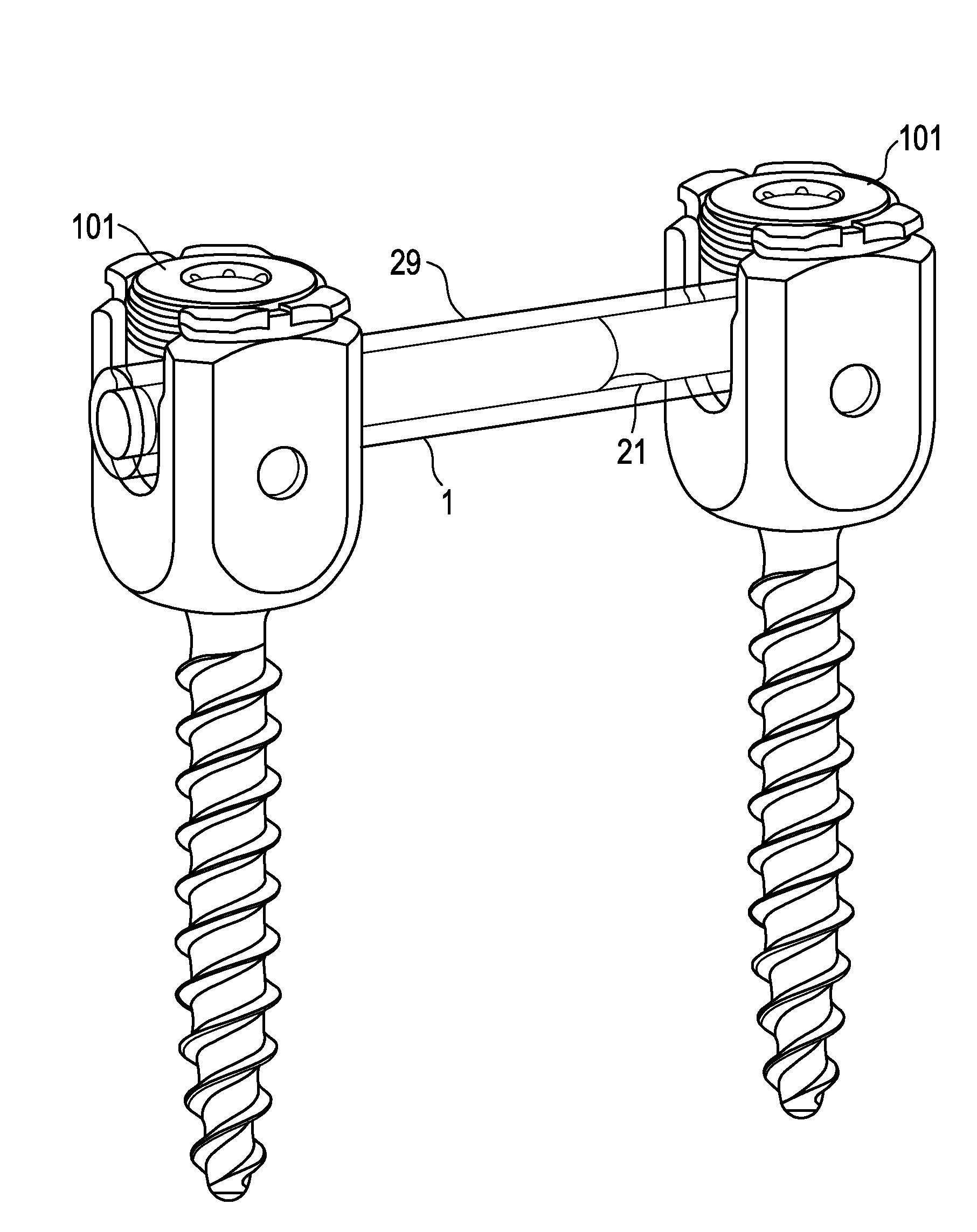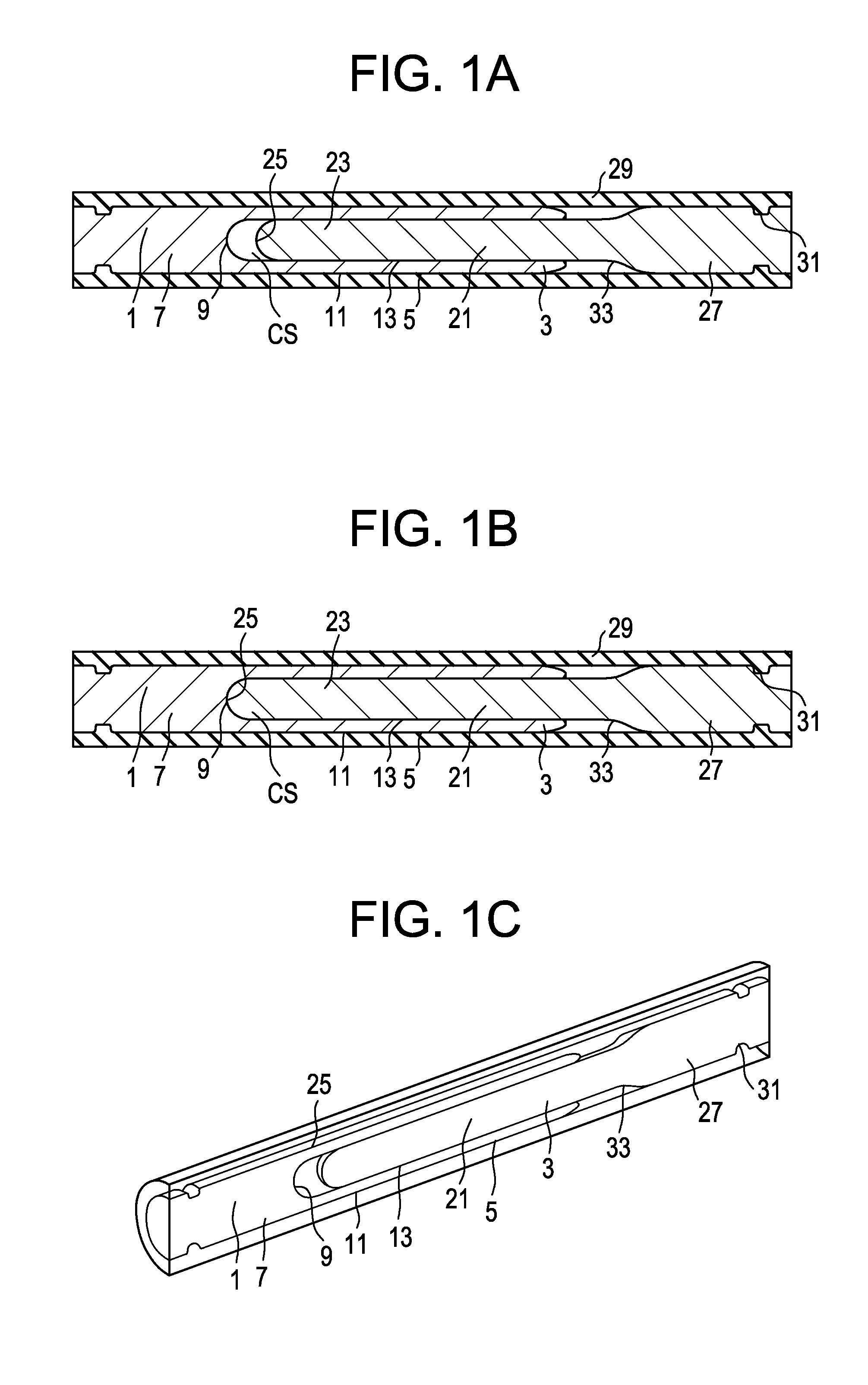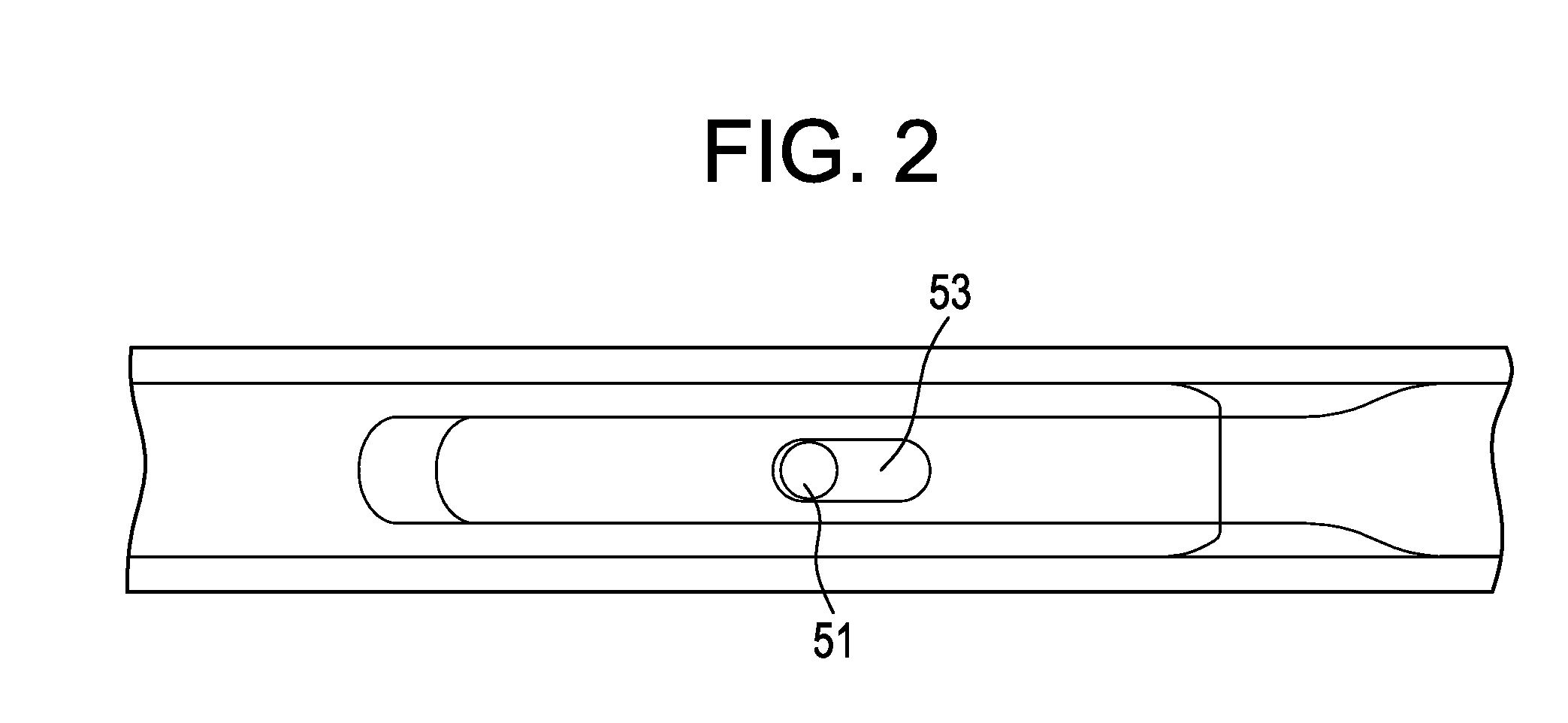Telescopic Rod For Posterior Dynamic Stabilization
a technology of dynamic stabilization and telescopic rods, applied in the field of telescopic rods for posterior dynamic stabilization, can solve the problems of limited capping techniques, disadvantages, and further damag
- Summary
- Abstract
- Description
- Claims
- Application Information
AI Technical Summary
Benefits of technology
Problems solved by technology
Method used
Image
Examples
Embodiment Construction
[0042]Now referring to FIGS. 1a-1c, there is provided a dynamic stabilization device comprising:[0043]a) a first hollow cylinder 1 having an open end 3, an intermediate annular portion 5 and a closed end 7, the closed end defining an inner surface 9, the intermediate annular portion defining an outer annular surface 11 and a first inner annular surface 13,[0044]b) an inner rod 21 having an outer diameter OD, a first end 23 having a first end surface 25, and a second end 27, the first end of the inner rod being slidably received within the inner annular surface of the first hollow cylinder, and[0045]c) a first elastomeric sleeve 29 having a first end and a second end,
wherein the first end of the first elastomeric sleeve is attached to the outer surface of the closed surface of the first hollow cylinder, and
wherein the second end of the first elastomeric sleeve is attached to the outer surface of the second end of the inner rod.
[0046]FIGS. 1a-1c also disclose the presence (in FIG. 1a)...
PUM
 Login to View More
Login to View More Abstract
Description
Claims
Application Information
 Login to View More
Login to View More - R&D
- Intellectual Property
- Life Sciences
- Materials
- Tech Scout
- Unparalleled Data Quality
- Higher Quality Content
- 60% Fewer Hallucinations
Browse by: Latest US Patents, China's latest patents, Technical Efficacy Thesaurus, Application Domain, Technology Topic, Popular Technical Reports.
© 2025 PatSnap. All rights reserved.Legal|Privacy policy|Modern Slavery Act Transparency Statement|Sitemap|About US| Contact US: help@patsnap.com



